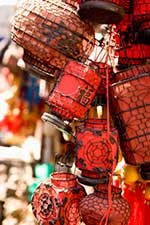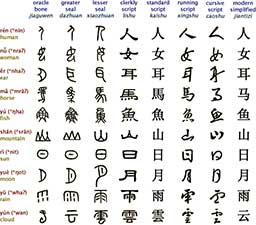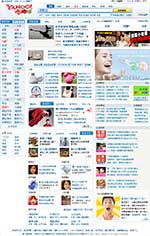Doing Business via the WWW in China
If you wish to be successful selling your products or services to the largest consumer group on earth, there are many factors to consider, from cultural and linguist to consumer preference. This blog will provide highlights on understanding Chinese consumer behavior and cultural values.
Lots of Consumers, Lots of Money
Based on various research estimates, the online user population in China is approximately 298 million with approximately 64 million Chinese accessing the Internet via broadband connections. It is estimated that 70% of Chinese users access the Internet from home, 37% from the workplace and 27% from Internet cafes.
China boast more than 700,000 websites and a solid foundation for eCommerce development. Last year Chinese online users spent almost $12.5 billion on Internet purchases and Chinese Internet users grew to 266.6 million with the Internet access market reaching up to $26.4 billion.
Chinese Culture and Values

China is a traditional society full of symbols, rituals, values and contextual elements.
At a macro-level, Chinese culture can be described using several cultural values. A country’s culture is made unique based on which of these values are incorporated into daily life and the emphasis it puts on each.
- Family: China is a group-oriented or collectivist society where relationships, network of relationships and harmony in relationships is valued over individual needs and goals.
- Role Familiarization: The importance of hierarchical relationships in Chinese society can be traced back to Confucius‘ five cardinal relations between sovereign and minister, father and son, husband and wife, old and young, and friends. Chinese tend to balance the roles and harmonize their relationships based on the five cardinal relations of Confucius.
- Reciprocity: Reciprocity and interdependence in inter-personal relationship is taken seriously in Chinese society.
- Trust: “Xin” (trustworthiness) is the most valuable philosophy among Chinese consumers. This sentiment can be seen captured in the belief that “once a liar, always a liar.” Personal reputation and prestige are important to Chinese; a proverb says: “a man needs a face like a tree needs its bark”.
- Chinese consumers look for monetary value – “Stretch a penny.” There is a Chinese saying “never make a purchase until you have compared three shops”.
- Chinese may appear to be “suspicious and cold” towards strangers with whom relationships have not been established. Such an obsession has caused much emphasis on relying on established relationships (guanxi) and relationship networks (guanxiwang).
- Guanxi: or proper connections (social networking in its most profound sense) is an important aspect of a Confucian society like China. Creating “Guanxi” through business partners, affiliates, online networks, or local Chinese companies is crucial for business success in China.
Chinese Consumer Decision Making
Here are some unique insights into a Chinese consumer’s mind, based on theoretical and applied research in academic circles:
- Chinese consumers generally rely on internal research based on past purchase experiences to make future purchase decisions.
- Chinese consumers in general, frequently use Word-of-Mouth or referrals from friends, family, and colleagues to gather market information.
- Chinese consumers tend to be somewhat risk-averse when shopping. Providing free trials and demos may reduce this anxiety.
- Chinese consumers tend to consciously look for well-known brands that have high prestige or are considered high quality.
- Chinese consumers, in general, tend to be very price-conscious and seek both extended information search and the evaluation of alternatives when making a high value purchase.
Market segmentation is an exercise in carefully identifying profitable and accessible consumer segments based on socio-demographics, geographics, and psychographics. Segmentation is unique to each company and product. Here are some general insights int Chinese consumer segments:
- China’s Elite and nouveau riche: In China more than 400 million people live on less than $2 a day but there is an emerging and fast growing elite class which shops at Armani, Gucci, Cartier, Ferrari, Bentley, and Hugo Boss. These are the high brand-conscious and prestige-oriented Chinese consumer segments who like to indulge in conspicuous consumption.
- China’s Generation Y: Success-driven, educated, information savvy and surprisingly loyal to Chinese values and culture but also open to Western ideas. They are good candidates for Western brands and are fashion-conscious.
- Trendy, Perfectionist Consumers: These are predominantly females who love to shop and associate foreign brands with quality and style.
- Traditional, Pragmatic Consumers: They don’t like to shop much and basically look for products based on price and not style. Predominantly male consumers and generally go for less expensive local brands rather than expensive or stylish foreign brands.
- Confused by Over Choice Consumer: Like traditional and pragmatic consumers they are not big on shopping and they prefer local Chinese brands over unknown brands and foreign brands.
The Chinese Language
Chinese belongs to the Sino-Tibetan family of languages and is spoken by more than a billion people making it the most widely spoken language in the world. Mandarin happens to be the most widely spoken Chinese dialect, followed by Wu (Shanghainese), Yue (Cantonese), Min, Xiang, Gan, Hakka and other dialects.
Chinese is written using characters called ideographs. There are approximately
50,000 characters found in the standard Chinese dictionary. The majority of Chinese characters consist of two elements 1) a signific, which indicates the meaning of the word, and 2) a phonetic, which indicates the sound.
Language Tips and Facts

- When working with Chinese remember it is a double-byte language and thus single-byte will not work. Double-byte Chinese character sets include: GB and Unicode for Simplified Chinese, and Big Five and Unicode for Traditional Chinese.
- Chinese names actually create visual representations imbued with meaning – thus when developing brands online or offline make sure your brand names carry meaning relevant to the Chinese consumer. Example, the P&G brand – Pamper means “helping baby’s comfort” or the brand – Whispers means “protection and comfort”
- Chinese is full of homophones which are words with the same pronunciation as another word. Numbers like 8, 6, 9, are homophones for auspiciousness and prosperity. The number 8 reads as ‘Fa’ (Cantonese) which means “to make a great fortune in the near future”.
- Traditional and Simplified Chinese: Today traditional Chinese characters are used in places like Taiwan, Hong Kong, and Macua, and simplified Chinese characters are mostly used in Mainland China and Singapore.
- Chinese can be written both vertically and horizontally.
- Chinese is generally written without any spaces between words, and even lines can be broken at any point. Chinese names should be written with surname first followed by the first name.
Chinese Cultural Correctness and Web Customization
An ancient culture like China has a long list of symbols and icons that carry special cultural meaning. It is important to be aware of them to avoid any cultural blunders and inadvertent use of offensive symbols.
Some examples:

- Number 8 tends to be a lucky number.
- Avoid the use of the numbers 4 and 7 which may relate to death.
- Animals: 2007 was the Year of the Pig, which is considered lucky. Other good luck symbols are the Dragon and Tortoise (Dragon – Yang, Tortoise – Yin) which bring good luck and health. A three-legged frog is a symbol for good luck, too.
- Clocks may symbolize death.
- Red: The Chinese lucky color. Red generally expresses joy, prosperity, luck and happiness. The use of red or a carefully selected shade of red (several sites in China use shades of red as a background color) can have a good impact on the visual imagery of the site.
- Spatial orientation refers to how web content is structured. According to Wendy Barber and Albert Badre, authors of “Culturability: The Merging of Culture and Usability” (1998), spatial orientation has a direct effect on website usability, because it affects visual perception. Manipulating the orientation can change the user’s comfort level. What is user-friendly for one country may be vastly different for another. Chinese consumers prefer website spatial placement and display that would generally be perceived as “cluttered” by most western consumers. This screen capture is a good example.
Internet and Search Engine Marketing in China
The key to promoting a website internationally is to create localized content, localized keywords, register local domains and then promote through local search engines, affiliate marketing, online and offline branding and promotions. Search Engine Marketing (SEM) appropriate to the target audience cultural values and language is also critical.
According to the Chinese Internet Network Information Center (CNNIC) the top level CN domains registered have reached more than a million. Now i-DNS.net International Pte. Ltd., in partnership with CNNIC is offering Internet domain names completely in Chinese characters. According to CNNIC guidelines the Chinese domain name must have at least one Chinese character. You may select from Chinese characters, ASCII letters (A-Z same as a-z), numbers (0-9) or hyphen (-) to compose your Chinese domain name. The length shall be limited to 20 characters (letters) (cnnic.net).
Chinese Market and Language Resources
Due to language and cultural complexities, there are many critical considerations to review before localizing your website or content for Chinese Consumers.
